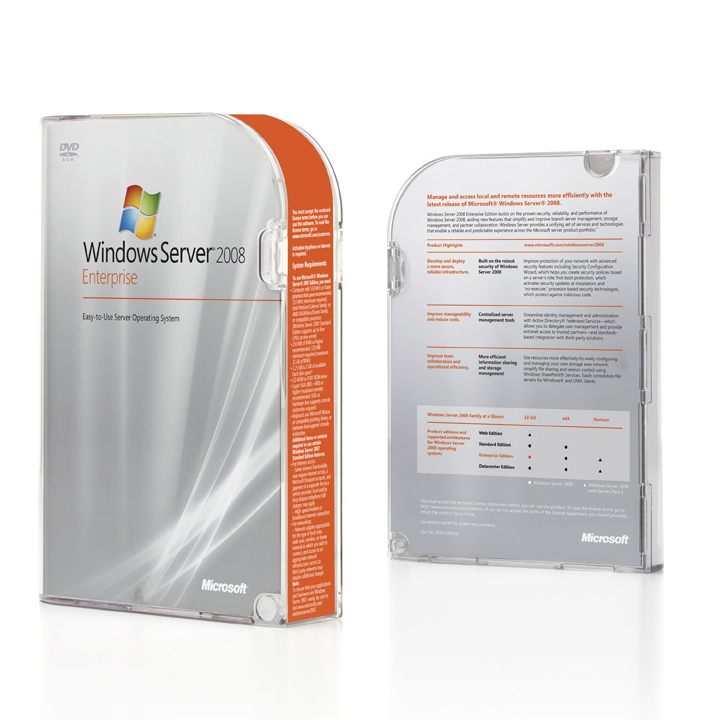
The Enterprise Edition, with support for server clustering, can provide organizations with the nonstop networking demands of true 24/7, 99.999% uptime capabilities required in high-availability environments. Remote Desktop Services are covered in more detail in Chapter 25.
#Windows server 2008 security editions windows#
The Enterprise Edition is the appropriate version of operating system for high availability and high-processing demands of core application servers such as SQL Servers or large e-commerce back-end transaction systems.įor organizations leveraging the capabilities of Windows Server 2008 R2 for Thin Client Remote Desktop Services that require access to large sets of RAM (up to 2TB) and multiple processors (up to eight sockets), the Enterprise Edition can handle hundreds of users on a single server. From the basis of scalability of processing and memory capacity, applications like Windows virtualization or enterprise-class Exchange 2010 or SQL 2008 servers would benefit from the capabilities of the Enterprise Edition of Windows Server 2008 R2.Īny time an organization needs to add clustering to its environment, the Enterprise Edition (or the Datacenter Edition) is needed.

With the Windows Server 2008 R2, Standard Edition taking on the bulk of network services, the Windows Server 2008 R2, Enterprise Edition is really focused on server systems that require extremely large-scale processing and memory capabilities as well as clustering or Active Directory Federation Services. Windows Server 2008 R2, Enterprise Edition The last version of the Windows Server operating system that supported 32-bit is Windows Server 2008.

32-bit hardware and a 32-bit installation is no longer supported. One of the first things an organization becomes aware of is that Windows Server 2008 R2 ONLY comes in 64-bit (圆4 or IA64) versions. See Chapter 34, "Capacity Analysis and Performance Optimization," for recommendations on choosing and tuning a Windows Server 2008 R2 system that is right for its intended purpose. Most organizations, large and small, find the capabilities of the Standard Edition sufficient for most network services. The Standard Edition is a good version of the operating system to support domain controllers, utility servers (such as DNS or DHCP), file servers, print servers, media servers, SharePoint servers, and so on. Unlike previous versions of Windows Server where basic functions and scalability for memory and processor support was limited to only the Enterprise or Datacenter Editions of the operating system, Windows Server 2008 R2, Standard Edition is now the default version deployed by organizations.Ī basic Windows Server 2008 R2 圆4-bit Standard Edition system supports up to four 圆4 professor sockets and 32GB of memory and supports all of the server roles available in Windows Server 2008 R2, with the exception of clustering, cross-file replication (DFS-R technology), and Active Directory Federation Services. The Windows Server 2008 R2, Standard Edition is the most common server version of the operating system. The main versions of Windows Server 2008 R2 include Windows Server 2008 R2, Standard Edition Windows Server 2008 R2, Enterprise Edition Windows Server 2008 R2, Datacenter Edition Windows Web Server 2008 R2 and Windows Server 2008 R2 Server Core. Windows Server 2008 R2 comes in the same release versions as the more recent server version releases from Microsoft with the addition of a Server Core version that provides a lighter GUI-less version of Windows Server 2008 R2. Learn More Buy Versions of Windows Server 2008 R2


 0 kommentar(er)
0 kommentar(er)
